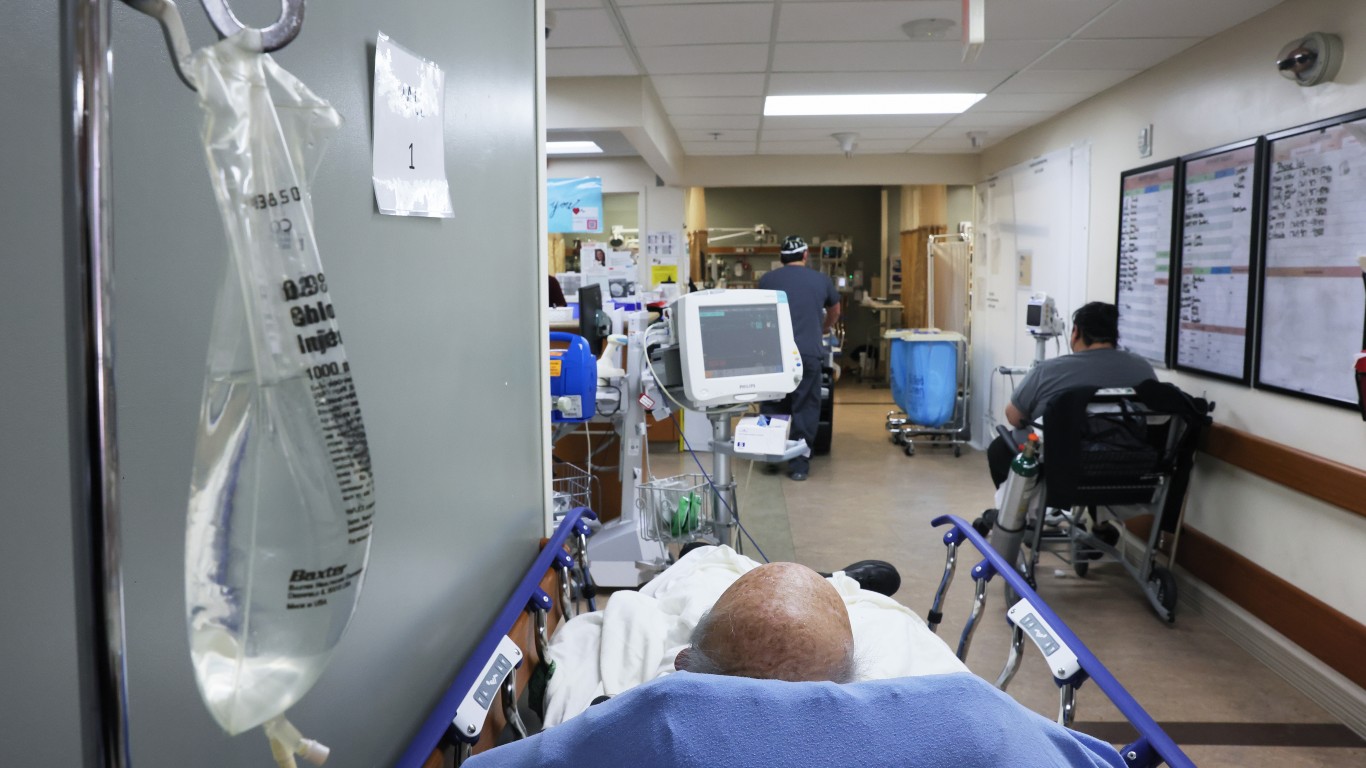Health and Healthcare
This Is How Much 8 Common Emergency Room Procedures Cost

Published:

The Centers for Disease Control and Prevention (CDC) recently put annual emergency department visits at 130 million a year. Those visits led to 16.2 million hospital admissions, and each admission results in dozens of possible tests and procedures. Recently, a research group looked at the cost of the most common of these.
Fair Health has published a 54-page analysis of emergency room activities, procedures and tests. It also sorted these by demography and age. Costs were the primary focus of its white paper titled “An Annual View of Place of Service Trends and Medical Pricing.” It was published on March 31. The authors noted, importantly, that because the data was collected from 2014 to 2019, COVID-19 related visits were not included. Clearly, 2020 data will be radically different because of the surge of visits due to the pandemic. Fair Health used over 30 billion health care claims to create the report. It added “CPT codes,” the term for how medical bills are identified by the procedure.
[in-text-ad]
Emergency rooms have an outsized portion of medical insurance claims. According to the white paper:
Among the places of service studied, ERs continued to hold the highest percentage of medical claim lines in 2019, with 2.94percent of all medical claim lines nationally. The comparable percentages for the other places of service were 1.56 percent for urgent care centers, 1.04 percent for ASCs, 0.22 percent for telehealth and 0.05 percent for retail clinics.
The Becker’s Hospital CFO Report summarized among the most common reasons for emergency room visits and their costs:
Emergency department visit — high severity/life-threatening: $1,151
Emergency department visit — high/urgent severity: $708
Emergency department visit — moderate severity: $441
Electrocardiogram : $44
Single-view chest X-ray : $41
Two-view chest X-ray : $46
Blood count; complete, automated : $36
CT head/brain without contrast material : $602
Among the important information that the Fair Health data does not show is who uses emergency rooms. A common myth is that it is primarily by the poor and uninsured. That idea recently was overturned by research published by the National Institutes of Health. The conclusion of the work:
We also show that while the uninsured do not use the ED substantially more than the insured, the uninsured do use other types of care much less than the insured. This may help create and perpetuate the misperception that the uninsured use the ED more than the insured.
Emergency room visits may be expensive, but they appear to cut across most income lines.
Click here to see the 25 cities where you don’t want to get sick.
The average American spends $17,274 on debit cards a year, and it’s a HUGE mistake. First, debit cards don’t have the same fraud protections as credit cards. Once your money is gone, it’s gone. But more importantly you can actually get something back from this spending every time you swipe.
Issuers are handing out wild bonuses right now. With some you can earn up to 5% back on every purchase. That’s like getting a 5% discount on everything you buy!
Our top pick is kind of hard to imagine. Not only does it pay up to 5% back, it also includes a $200 cash back reward in the first six months, a 0% intro APR, and…. $0 annual fee. It’s quite literally free money for any one that uses a card regularly. Click here to learn more!
Flywheel Publishing has partnered with CardRatings to provide coverage of credit card products. Flywheel Publishing and CardRatings may receive a commission from card issuers.
Thank you for reading! Have some feedback for us?
Contact the 24/7 Wall St. editorial team.